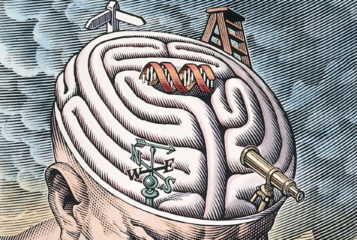As a scientist, genetics has always fascinated me: it's our looks, traits, behaviours and diseases; our past, our present and our future. There are over known 6000 genetic disorders and six percent of newborns worldwide have serious birth defects, many of which are caused by genetics. Yet, these are just numbers – you cannot empathise with them.
Photographer Paul Wenham-Clarke's 'Our Human Condition' exhibition at Oxo Tower Wharf, London, humanises these numbers: it gives them names, stories, pictures and emotions. I went to the exhibition expecting to further my knowledge in genetics, but instead, I got schooled in the most important field of all: being human.
Wenham-Clarke captures the lives (and in one case, tragic death) of those affected by a range of genetic conditions including albinism, Down's syndrome, profound and multiple learning disabilities (PLMD) and deafness, onychodystrophy, osteodystrophy and mental retardation (DOOR) syndrome in a series of photographs and short interviews with affected people, or their siblings or parents.
The photographs often depict the struggles that can accompany genetic conditions, but when brothers Sebastian and Santiago race past an ice cream truck pushing wheelchair-user Christian with them (an activity all three brothers seemed to enjoy), it also depicts the fight in them, their unwillingness to succumb to the relentlessness of his condition. This photograph happens to be the first one you come across, setting the tone for the rest of the exhibition.
The impression I got as I walked past the displays, was that 'Our Human Condition' was not merely referring to those directly affected by genetic conditions, but to the condition of those supporting and surrounding them as well. This made it all more familiar, and evoked a lot more emotion, not just from me, but also of the others in the exhibition. It was visible.
The stories captured from the children whose siblings suffered from a genetic condition were the most resonant. A child's capacity for honesty and truth is resounding – so much so that their lack of awareness of what should or should not be said often puts us in embarrassing situations! Discussing their affected siblings, they described the fun they have together and the love they show each other, but also exhibited a strong sense of responsibility and protectiveness toward them, especially regarding societal problems like bullying (which I'm glad to report seemed less common than I expected).
The exhibition was very powerful in how it makes you think and feel. It made me wonder: what can we do to help? Both as a society and as a scientific community. Maybe one day genome editing or other targeted therapies will alleviate these conditions, but in the meantime, I will leave you with a paragraph from one of the stories that stuck with me most:
'Having Lauren in my life changed how I view the world. Everyone should get the opportunity to get to know someone like Lauren as it not only changes how you see yourself, but challenges your expectations of a sector of our society who are so often overlooked' – Jenna (Lauren's sister).





Leave a Reply
You must be logged in to post a comment.